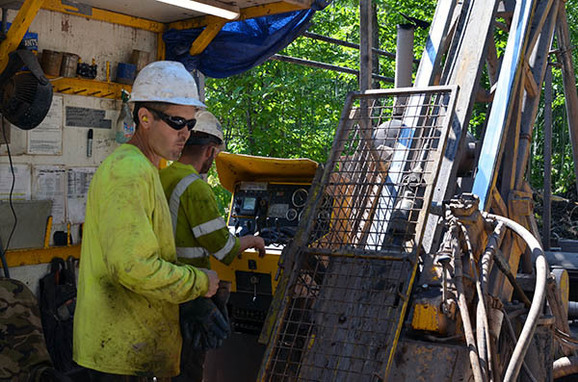 Digging into severed mineral rights
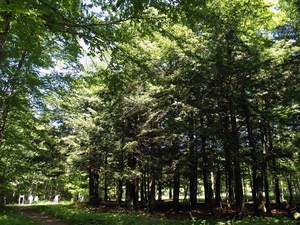 A couple of winters ago, when a copper mining company announced plans for exploratory drilling under a section of Porcupine Mountains Wilderness State Park, the topic of severed mineral rights – and the question of what exactly they are, and what powers they convey – was raised by many people concerned about potential mining activity at this beloved Michigan state park.
Similar questions have been raised more recently with a mining company application to lease state-owned minerals on properties in Marquette County.
In the 1940s, when lands were being acquired in the western Upper Peninsula to develop the state park amid the storied northern hardwood and hemlock forests of the Porcupine Mountains, some properties were sold, with the mineral rights retained by the previous owner.
Under this scenario, though the state of Michigan owns the surface property rights, the state must allow the mining company “reasonable access” to the minerals situated below ground.
As a property owner, if someone told you he or she had the right to use the surface of your land to extract the minerals underneath, you would likely think he or she was mistaken.
How could that be true?
|
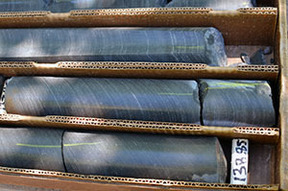 Unless you also own the minerals under your land, that someone might be right.
The rights to develop minerals in Michigan are based on common law doctrines. These doctrines, which have evolved through courts’ interpretations of rights, have roots in the old English laws that we inherited.
What are mineral rights?
Real property ownership includes a bundle of ownership rights, including the right to possess, use, enjoy, encumber, will, sell or do nothing at all.
“Mineral rights are a type of real property and can be owned in conjunction with, or separately from, the surface rights,” said Mark Sweatman, director of the Michigan Department of Natural Resources’ Office of Minerals Management.
An owner can separate the mineral rights from his or her land by conveying (selling or otherwise transferring) the land but retaining the mineral rights; conveying the mineral rights and retaining the land; or conveying the land to one person and the mineral rights to another.
“Landowners are sometimes surprised to find out someone else owns the rights to the minerals beneath the surface of their land, and that a mineral owner typically has the right to reasonable use of the surface as necessary to extract minerals,” Sweatman said. “Mineral rights owned by someone other than the surface owner are rights said to be ‘severed.’”
Once mineral rights are severed from the surface estate, the mineral estate becomes the “dominant estate” and the surface estate becomes the “servient estate.” This legal principle recognizes that some degree of surface access is necessary to develop the mineral estate.
|
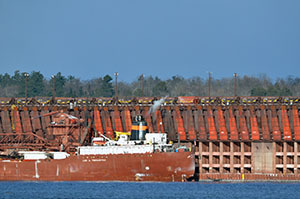 “Because of its dominance, the mineral estate holds an implied easement to use as much of the surface as is reasonably necessary for the development of the mineral estate,” said Julie Manson, property manager with the Lease Management Unit of the DNR’s Office of Minerals Management.
In the case of the mining company test drilling at Porcupine Mountains Wilderness State Park, the DNR allowed access to drill core samples, but required various safeguards to protect the surface features at the park.
Some of these provisions included drilling only when the ground was frozen, using tracked vehicles to lessen any potential impacts to vegetation and using old logging roads to access core sites, rather than building new roads.
The test drilling was completed over a span of two winters without any adverse impacts to DNR-managed lands at the state park.
At some point, if the mining company does decide to mine the minerals lying beneath the park, it would do so from outside the park boundary.
Permission to mine would require the mining company to work through a separate permitting process via the Michigan Department of Environmental Quality. That process would allow for public comment on plans prior to the DEQ’s final permitting decisions.
Mineral rights managed by the state
The DNR manages over 6.4 million acres of mineral rights, including almost 2.3 million acres of mineral rights where someone other than the State of Michigan owns the surface rights.
“Most of these rights were acquired by the state between 1920 and 1940 due to non-payment of property taxes,” Sweatman said. “When tax-reverted properties were subsequently sold, it was common practice for mineral rights to be retained.”
|
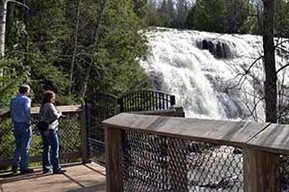 The DNR is the only state agency authorized to lease State of Michigan-owned mineral rights. Mineral leasing activities, as well as the verification of mineral lease revenues are administered by DNR’s Office of Minerals Management.
Mineral rights leased by the DNR include, oil, natural gas, metallic minerals – such as copper and nickel – and non-metallic minerals such as sand, gravel, limestone and salt.
“Revenue generated from the leasing and sale of state-owned mineral rights translates into funding for the acquisition, development, and maintenance of local and state parks and other recreational areas, resulting in a wide range of recreational opportunities and access to Michigan's forests, trails, waterways, and beaches,” said John Pepin, DNR deputy public information officer. “Mineral revenue generated since the 1980s for Michigan has exceeded $1 billion. Many important recreation projects funded in Michigan through the Natural Resources Trust Fund have been financed with revenue produced by oil, gas and minerals leasing revenue.”
In Marquette County, a mining company recently applied for permission to lease mineral rights owned by the state of Michigan. The state will consider the application and then decide whether to grant the leases, based on recommendations from foresters, biologists and other natural resource professionals.
“A mineral lease from the State of Michigan does not mean there are actually valuable mineral resources in that location, nor does it give permission to drill a well or mine for minerals,” Sweatman said. “A lease simply gives the lessee the exclusive right to pursue development of the mineral rights, should they choose to. If the lessee chooses to develop the mineral rights, all necessary permissions must still be obtained, and all regulations must be followed.”
|
 In the mining industry, companies often secure leases to prevent competitors from exploring mineral development in those areas.
Legal issues
Michigan has laws in place that require owners of a severed mineral interest to take steps at least once every 20 years to keep their interest alive. If the severed mineral owner does not take those steps, the severed oil and gas rights will revert to the surface owner and the other severed mineral rights will revert to the last owner of those rights in the chain of title.
For more information, please refer to the Dormant Mineral Act (MCL 554.291 et seq) and the Marketable Record Title Act (MCL 565.101 et seq). Neither of these laws applies to governmental entities.
While only the mineral owner is typically entitled to royalties when the minerals are developed, a surface owner may negotiate with the developer to receive payment for the use of his or her surface in the development of the minerals.
Surface property owners can pursue the purchase of the mineral rights beneath their land with whomever owns the mineral rights. The mineral right owner is not required to sell them, but such sales do occur.
“Determining who owns the minerals beneath your property can be an arduous task, but assistance can be acquired through an attorney or title company,” Manson said. “Once an owner is established, a mineral appraisal is typically completed to determine its value. If the State of Michigan owns the mineral rights a program exists whereby a purchase can be pursued.”
Mineral ownership can have a big impact on the ability to use and enjoy the land as desired, even when the land is a Michigan state park. The DNR seeks to purchase surface and mineral rights jointly whenever possible.
“The issue of mineral rights can be complicated,” Sweatman said. “Those involved in mineral and surface rights issues may want to consult an attorney.”
Property owners – whether surface or mineral rights owners – can benefit greatly from an understanding of severed mineral rights, what they mean and how they work.
Clearing aside the mystery can reveal what truly lies beneath the surface of the lands we love.
Get more information on minerals management in Michigan.
|
Check
out previous Showcasing the DNR stories in our archive at michigan.gov/dnrstories. To subscribe to upcoming Showcasing articles,
sign up for free email delivery at michigan.gov/dnr.
/Note to editors: Media contact: John Pepin, 906-226-1352. Accompanying photos and a text-only version of this story are available below for download. Caption information follows. Credit Michigan Department of Natural Resources, unless otherwise noted.
Text-only Version of this story.
Core: Exploratory drilling core samples extracted in the western Upper Peninsula are shown.
Crew: A drilling crew conducts exploratory drilling on private land in the western Upper Peninsula.
Falls: Revenue from oil, gas and mineral leases in Michigan is returned to the state in grants that fund recreation projects, like this walkway at Bond Falls in Ontonagon County.
Freighter: The Lee A. Tregurtha picks up a load of taconite pellets from the Upper Harbor ore dock in Marquette. Iron ore is one of Michigan’s most important mineral resources.
Museum: The Michigan Iron Industry Museum in Negaunee Township provides a fascinating look into the state’s iron mining heritage.
Park: From state-managed parks to private vacation properties, property owners may be separate parties when it comes to mineral and surface rights./
|